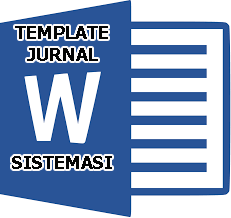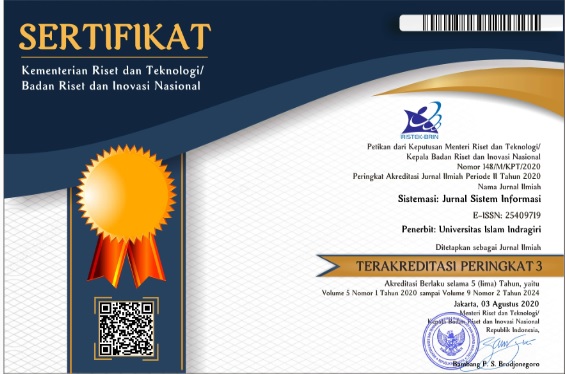Application of Artificial Intelligence using K-Means for Programming Question Assessment
Abstract
Keywords
Full Text:
PDFReferences
K. Harefa and A. Jabbar, “Aplikasi Sistem Automated Essay Scoring untuk Jawaban Soal Ujian dengan Menerapkan Algoritma Jaro Winkler,” Oct. 2022.
L. R. Cipto and P. Irfan, “Aplikasi Ujian Online dengan Penilaian Otomatis menggunakan Algoritma Cosine Similarity pada SMAN 7 Mataram,” Jurnal BITe, Vol. 2, No. 1, pp. 57–65, Jun. 2020, doi: 10.30812/bite.v2i1.810.
Alfirna Rizqi Lahitani, “Automated Essay Scoring menggunakan Cosine Similarity pada Penilaian Esai Multi Soal,” May 2022. [Online]. Available: http://ejurnal.ubharajaya.ac.id/index.php/JKI
M. N. I. Susanti, A. Ramadhan, and H. L. H. S. Warnars, “Automatic Essay Exam Scoring System: A Systematic Literature Review,” in Procedia Computer Science, Elsevier B.V., 2023, pp. 531–538. doi: 10.1016/j.procs.2022.12.166.
Musdalipah, R. Soekarta, and I. Amri, “Clustering Penilaian Kinerja Dosen menggunakan K-Means di Universitas Muhammadiyah Sorong,” Framework, Vol. 01, No. 02, pp. 136–145, 2023.
W. Satria and M. Riasetiawan, “Essay Answer Classification with Smote Random Forest and AdaBoost in Automated Essay Scoring,” IJCCS (Indonesian Journal of Computing and Cybernetics Systems), Vol. 17, No. 4, pp. 359–370, Oct. 2023, doi: 10.22146/ijccs.82548.
M. O. Farooqui, M. I. Siddiquei, and S. Kathpal, “Framing Assessment Questions in the Age of Artificial Intelligence: Evidence from ChatGPT 3.5,” Emerging Science Journal, Vol. 8, No. 3, pp. 948–956, Jun. 2024, doi: 10.28991/ESJ-2024-08-03-09.
H. Alexander, Y. Umaidah, and M. Jajuli, “Implementasi Clustering untuk menentukan Efektivitas Nilai Siswa sesudah Pandemi Covid-19 menggunakan Algoritma K-Means,” Jun. 2023.
R. Anggara, S. Defit, and B. Hendrik, “Implementasi K-Means Clustering dalam Analisa Soal Ujian CBT Universitas Baiturrahmah,” Apr. 2024.
A. Z. Saputra, N. Suarna, and G. D. Lestari, “Klasterisasi Nilai Ujian Sekolah menggunakan Metode Algoritma K-Means,” Jurnal Janitra Informatika dan Sistem Informasi, Vol. 3, No. 1, pp. 1–9, Apr. 2023, doi: 10.25008/janitra.v3i1.153.
M. ’ Andri, A. Cendekia Siregar, and P. Y. Utami, “Sistem Penilaian Ujian Otomatis untuk Soal Esai menggunakan Metode Vector Space Model,” Dec. 2021.
H. F. Kurniawan, Sukisno, L. Arlianti, and T. Hidayat, “Implementasi Metode Agile untuk Rancang Bangun Sistem Penilaian Kinerja Guru,” Jurnal Informatika dan Teknik Elektro Terapan, Vol. 12, No. 3S1, Oct. 2024, doi: 10.23960/jitet.v12i3S1.5171.
H. Arfandy and I. A. Musdar, “Rancang Bangun Sistem Cerdas Pemberian Nilai Otomatis untuk Ujian Essai menggunakan Algoritma Cosine Similarity,” Dec. 2020.
F. Safnita, S. Defit, and G. W. Nurcahyo, “Penerapan Algoritma K-Means dalam Pengklasteran Hasil Evaluasi Akademik Mahasiswa,” Apr. 2024.
S. T. Boku, R. T. Abineno, and A. Aha Pekuwali, “Pengelompokan Performa Siswa dalam Pelajaran Matematika dengan Algoritma K-means di SMP Negeri 4 Mauliru,” Aug. 2023.
A. Venčkauskas, V. Jusas, and D. Barisas, “Quality Dimensions for Automatic Assessment of Structured Cyber Threat Intelligence Data,” Applied Sciences (Switzerland), Vol. 15, No. 8, Apr. 2025, doi: 10.3390/app15084327.
Bato, B., Pomperada. J. R, “Automated Grading System with Student Performance Analytics,” Technium, Vol. 30, pp. 58-75, 2025.
Sokač, M., Fabijanić, M., Mekterović, I., Mršić, L., “Automated Grading Through Contrastive Learning: A Gradient Analysis and Feature Ablation Approach,” Machine Learning and Knowledge Extraction, Vol. 7, pp. 41, 2025, doi: 10.3390/make7020041.
DOI: https://doi.org/10.32520/stmsi.v14i4.5360
Article Metrics
Abstract view : 353 timesPDF - 87 times
Refbacks
- There are currently no refbacks.

This work is licensed under a Creative Commons Attribution-ShareAlike 4.0 International License.









